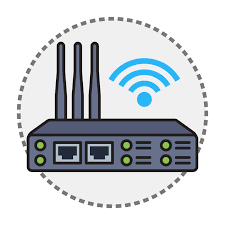-
- Resolving Connectivity Issues in Linux-Based IoT Gateways
- Understanding the Importance of Connectivity in IoT Gateways
- Common Connectivity Issues in Linux-Based IoT Gateways
- Configuration Steps to Resolve Connectivity Issues
- Step 1: Check Network Configuration
- Step 2: Test Network Connectivity
- Step 3: Review Firewall Settings
- Step 4: Update Software and Firmware
- Step 5: Monitor System Logs
- Practical Examples and Use Cases
- Best Practices for Maintaining Connectivity
- Case Studies and Statistics
- Conclusion
Resolving Connectivity Issues in Linux-Based IoT Gateways
In the rapidly evolving landscape of the Internet of Things (IoT), connectivity is paramount. Linux-based IoT gateways serve as critical nodes that facilitate communication between devices and the cloud. However, connectivity issues can arise due to various factors, including network configuration errors, hardware malfunctions, or software bugs. This guide aims to provide a comprehensive approach to diagnosing and resolving connectivity issues in Linux-based IoT gateways, ensuring seamless operation and data flow.
Understanding the Importance of Connectivity in IoT Gateways
Connectivity issues can lead to significant downtime, data loss, and reduced operational efficiency. According to a study by McKinsey, companies that effectively manage their IoT connectivity can improve operational efficiency by up to 30%. Therefore, resolving connectivity issues promptly is crucial for maintaining the integrity and performance of IoT systems.
Common Connectivity Issues in Linux-Based IoT Gateways
Before diving into the resolution steps, it’s essential to identify common connectivity issues:
- Network misconfiguration
- Hardware failures (e.g., faulty network interfaces)
- Software bugs or outdated firmware
- Firewall or security settings blocking traffic
- Insufficient power supply to the gateway
Configuration Steps to Resolve Connectivity Issues
Step 1: Check Network Configuration
Begin by verifying the network configuration settings of your IoT gateway. Use the following commands to check the current network status:
ip addr show
ip route show
Ensure that the IP address, subnet mask, and gateway are correctly configured. If you are using DHCP, confirm that the DHCP server is operational.
Step 2: Test Network Connectivity
Use the ping command to test connectivity to the gateway and external servers:
ping 8.8.8.8
ping
If the ping fails, check the physical connections and network cables.
Step 3: Review Firewall Settings
Firewall settings can often block necessary traffic. Check the firewall status and rules using:
sudo ufw status
sudo iptables -L
Ensure that the required ports are open for communication. For example, if your application uses MQTT, ensure port 1883 is accessible.
Step 4: Update Software and Firmware
Outdated software can lead to connectivity issues. Update your system and installed packages:
sudo apt update
sudo apt upgrade
Also, check for firmware updates for your network interface and apply them as necessary.
Step 5: Monitor System Logs
System logs can provide insights into connectivity issues. Use the following command to view logs:
journalctl -xe
Look for any error messages related to networking or hardware failures.
Practical Examples and Use Cases
Consider a scenario where an IoT gateway is unable to send data to the cloud due to a misconfigured network interface. By following the steps outlined above, the administrator can quickly identify that the gateway is set to a static IP that conflicts with another device on the network. Correcting the IP address resolves the issue, restoring connectivity.
Best Practices for Maintaining Connectivity
- Regularly update software and firmware to mitigate bugs.
- Implement robust monitoring solutions to detect connectivity issues early.
- Use redundant network paths to ensure failover capabilities.
- Document network configurations and changes for troubleshooting.
Case Studies and Statistics
A case study by IBM highlighted that a manufacturing company reduced downtime by 25% after implementing proactive monitoring of their IoT gateways. By regularly checking network configurations and updating firmware, they minimized connectivity issues significantly.
Conclusion
Resolving connectivity issues in Linux-based IoT gateways is essential for maintaining operational efficiency and data integrity. By following the structured steps outlined in this guide, administrators can effectively diagnose and resolve common connectivity problems. Implementing best practices such as regular updates and monitoring can further enhance the reliability of IoT systems. In an era where connectivity is crucial, ensuring that your IoT gateways are functioning optimally is not just beneficial; it is imperative.
